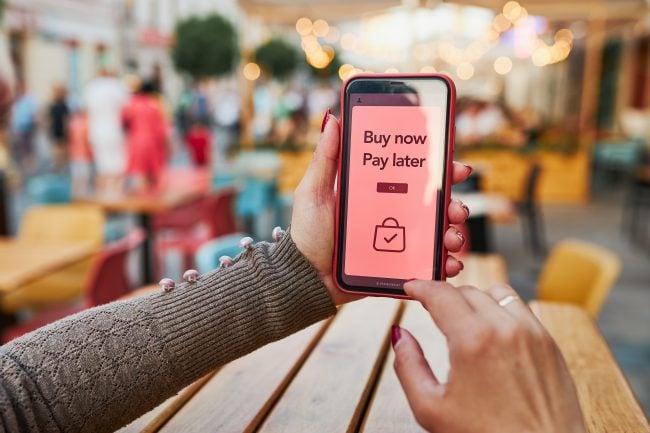 Cash continues to rule. (Source: Shutterstock)
Cash continues to rule. (Source: Shutterstock)
The payments world has long speculated about the future of cash. Some states and cities have made it very clear where the cash versus cashless issue stands. In March, New Jersey Governor Phil Murphy signed a bill banning businesses from refusing to take cash from consumers. Of note, Massachusetts has had a similar law on the books since 1978.
Along with New Jersey, two major cities recently have made cash-related announcements that could mean credit unions soon have to make some tough decisions about the payment trends on which they're willing to bet.
Recommended For You
One of those big announcements came about six weeks ago in Philadelphia, Penn., via new legislation, signed by the mayor, prohibiting most retailers there from refusing to take cash or from charging customers more for paying in cash. Philadelphia is reportedly the first major city to take this step. Soon after that came news at the other end of spectrum – that Atlanta, Ga.'s Mercedes-Benz Stadium would become the first National Football League and Major League Soccer stadium to stop taking cash. The move should speed up transaction times, the stadium said in a press release.
Announcements like those can make it tricky for credit unions and other financial institutions to decide whether to make more cash-centered investments such as ATMs, or direct that money toward card-based efforts. Here's what two industry pros said the increasing fickleness about cash could mean for credit unions, and what credit unions can do now to ensure they're ready for the future of cash.
Early Mourning
Plastic cards and mobile wallets may get the spotlight, but cash is still the most frequently used payment instrument – especially for transactions under $10, according to data from the Federal Reserve Bank of San Francisco.
Credit unions should not plan for the death of cash anytime soon, according to Taylor Nelms, senior director of research at Filene Research Institute in Madison, Wis. Card usage will increase, but most of that will come at the expense of checks and not cash, he added. "All the data speaks to us that cash is actually not going away. Instead, what we're seeing is efforts to make it go away, frankly," he said.
Cornerstone Advisors Senior Director Tony DeSanctis said he's seeing similar trends.
"I would basically say cash usage probably stays relatively flat over the foreseeable future," he predicted. "I don't think we'll be in a situation where cash sort of disappears in the next five years. I think it's got a longer tail than that, so to speak."
He added, "Probably the biggest opportunity to reduce paper transactions is on the business side. So as you start to get into things like real-time payments and same-day ACH, and commercial card and treasury management services that become more robust … I think that's where a lot of that check volume that exists today goes away."
ATM Fees Versus Interchange Fees
Cash may not be on its deathbed, but from a revenue perspective, credit unions probably have more to gain from card-focused investments than from cash-focused investments, according to DeSanctis. Interchange fees and data collection may overshadow ATM fees over the long run, he noted.
"A lot of credit unions are waiving ATM fees. I don't think they are as big a revenue stream as they've been in the past," he noted. "The other thing you have to remember is, as it becomes more and more important, the data insights that you get from knowing where your members are transacting is not a small value. There's significant value to knowing that they spend $3 at the coffee shop and that they did it on your card."
But not every credit union will come to the same conclusion, Nelms warned.
"As a leader, you have to start with who are your actual members, not who are your hypothetical members, not who would I like my members to be, but who are your actual members," he said.
"Market research is not a bad place to start when you're trying to answer a question like this. Do I want to make a big splashy play in a peer-to-peer payments app that's embedded in my mobile channel, or am I going to build out a branch?" Nelms said. "I think it's really important to start with what your members are doing right now, and how they are managing their money right now.
The Underbanked and Unbanked
As cash's existential crisis intensifies, credit unions will need to make strategic decisions about whether and how to serve the underbanked and unbanked – the one in four households that obtains financial products and services outside of the mainstream banking system (according to the FDIC) and often relies on cash.
"I guess if there's one opportunity maybe from a credit union perspective, it's continuing to look for ways to bank a broader population of the unbanked and find a way to make that product more compelling so that cash becomes a less viable option for them," DeSanctis said. "Generally, that's probably the biggest opportunity."
Many members are going to need cash as a backstop, Nelms added.
"There are definitely segments of the population who are more reliant on cards or mobile payments than others, and depending on their memberships, some credit unions may be serving a population that is already operating in a cashless world," he explained. "But on the other hand, I think it's really important to remember that cash serves lots of functions other than just your everyday retail payment … they're really important for tips. It's really important as a gift. We use them in all kinds of ritual and cultural ways … when you pass around the offering plate in church, or when you tithe in your mosque or your synagogue, you're still usually doing that with cash."
Wallet Dominance
Credit unions that decide to spend more time and effort on building a card-centered world have a big obstacle to surmount: Getting their members to prefer the credit union's cards over all others – and prefer them enough to bother linking them to their mobile wallets, bill pay accounts, online retailer accounts and at other recurring purchase points.
"The extent to which places are cashless, the extent to which they have the tap-and-take capabilities, whether that's a contactless card or your mobile wallet, more and more what we're seeing the biggest growth in is digital commerce," DeSanctis said. "I want to make sure that my card is at the top of the wallet. And I don't think that changes with this cash-versus-cashless scenario."
But credit unions shouldn't make the cash-versus-cards investment decision an all-or-nothing one.
"Its important to have a diverse monetary ecosystem, not one that is dominated by one or two payment channels or payment interfaces," Nelms said. "Cash serves a really crucial purpose, and so not only is it not disappearing, it probably shouldn't disappear. And for all the investments credit unions and other financial institutions have made in mobile payments and online peer-to-peer payments, they're also investing in ATMs. I think that a lot of credit unions have recognized that cash still plays a really important role for the vast majority of Americans."
© 2025 ALM Global, LLC, All Rights Reserved. Request academic re-use from www.copyright.com. All other uses, submit a request to [email protected]. For more information visit Asset & Logo Licensing.






